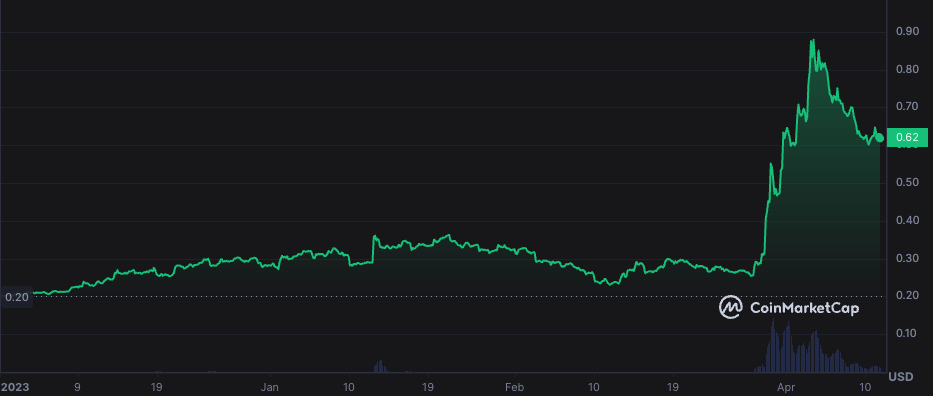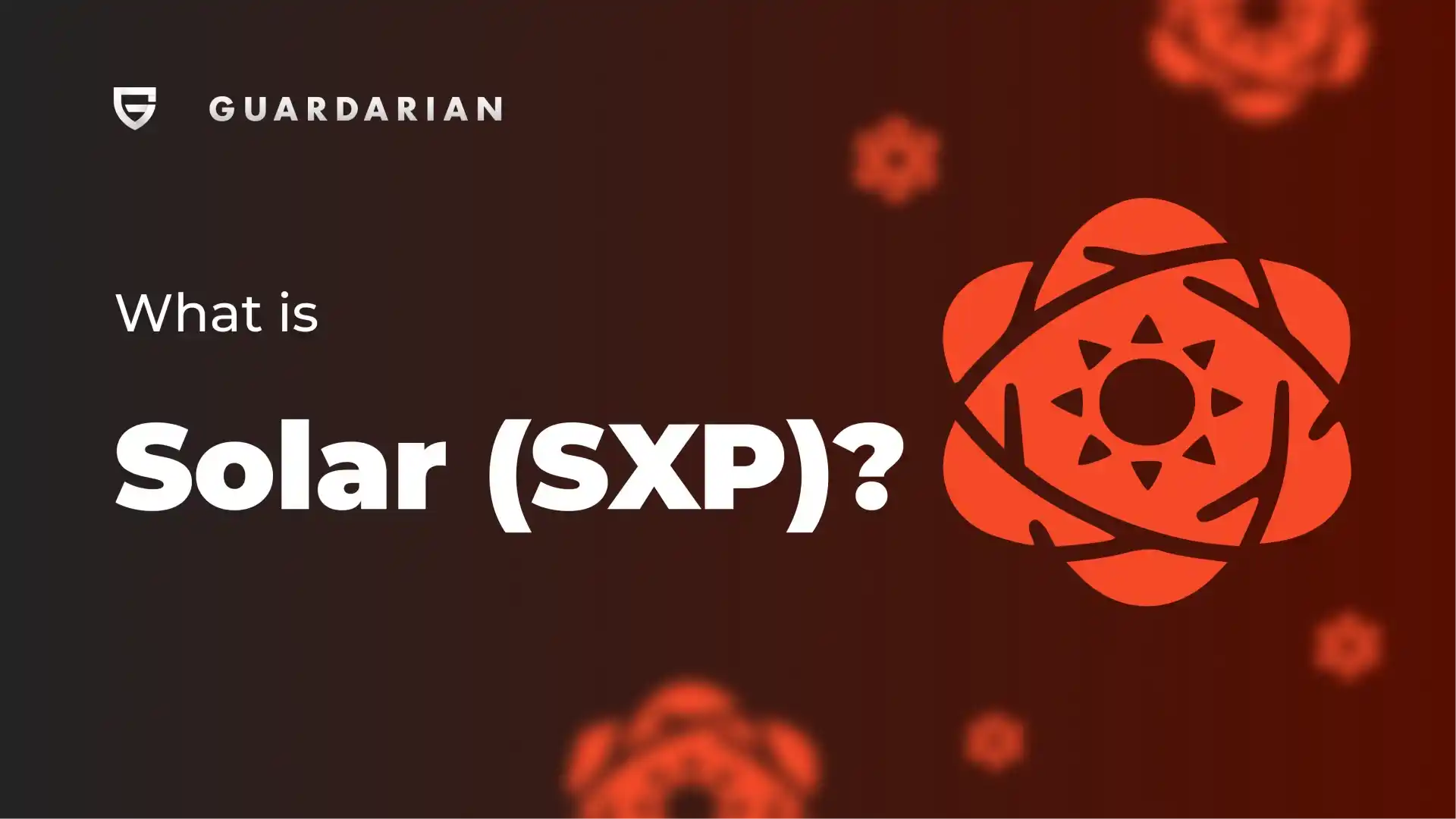If you took a quick glance at the top 100 cryptocurrencies by market cap, you would probably notice SXP, the native token of the Solar blockchain. While it is not quite as popular as the Solanas and Ethereums of the crypto world, it has amassed a dedicated community and even recently saw a price spike of over 100%.
So, what is Solar and how does its native SXP token work? In this article, we’ll go through how the ecosystem came to be and how its various mechanisms operate.
Let’s begin with… 👇
What is Solar (SXP)?
At its core, Solar is an open-source layer-1 blockchain that was founded in 2018 by Nayiem Willems and Joselito Lizarondo. Solar is known to be very community-centric, is governed by a Decentralized Autonomous Organization (DAO) and is backed by a delegated proof-of-stake consensus mechanism.
At the center of this project is the SXP token which can be used for trading, commercial purposes, and voting within the ecosystem. But perhaps the biggest appeal of Solar as an ecosystem and SXP as a token are the fast and low-cost transactions they facilitate and their consistent emphasis on community participation and empowerment.
Is Solar and Swipe the Same Thing?
Looking into the Solar ecosystem, you’ll find the term ‘Swipe’ being mentioned constantly and might wonder if they are the same thing. And they are, to an extent.
When the project was first launched in 2018, it went by the name Swipe. But as time went on, its creators wished to create a more community-centric ecosystem that could compete with giants like Ethereum and this required an overhaul. This overhaul saw a new team take the reins at the newly-named Solar and a DAO instituted.
Eventually, crypto exchange Binance acquired significant shares in Solar and this support facilitated several notable developments. These include the launch of a new mainnet, the introduction of staking, and the release of the Solar Side Ledger Protocol.
In essence, Swipe is the former iteration and Solar is the current functioning version.
How Does Solar Work?
As we’ve previously mentioned, Solar runs on a delegated proof-of-stake mechanism which is forked from the ARK blockchain (which is now known as the Solar Core). Unlike a ‘traditional’ proof-of-stake mechanism, the chance to become a network delegate is not exactly available to everyone. Instead, the community votes on who is allowed to become a delegate and act in everyone’s best interests.

In total, 53 delegators operate within the network at any given time and in return for their efforts, receive SXP tokens. Solar transactions are divided into rounds, which consist of 53 blocks that carry rewards of 530 SXP each.
Each delegate validates one block per round and their share of the 530 SXP is based on a specific formula which takes into account their position at the start of the round, the total number of delegates, and so on.
After they have received their reward, the delegates can choose how much of their SXP to sell and how much to hold on to long-term. This intricate system has led to Solar having an average block processing time of 8 seconds. This makes it one of the faster blockchains on the market, though it has not quite beaten out Solana, which has a block processing time of 400 milliseconds.
Solar Foundation ecosystem
The Solar Foundation is a non-profit organization dedicated to supporting the Solar blockchain, as well as its native SXP token. Besides keeping documentation of developments of all things Solar, the foundation offers support for those wanting to join the ecosystem and manages several Solar-adjacent tools such as the Solar wallet and the Solar card.
Solar wallet
The Solar Wallet is the dedicated platform for users to store and use their SXP tokens, as well as interact with the wider blockchain. Available as a desktop wallet, a browser extension and a mobile app, the Solar Wallet can be used to store, send and receive SXP tokens, as well as complete voting transactions.
As such, the wallet plays a dual role in facilitating both financial and community participation in the Solar blockchain community.
Solar Card
The Solar card is an upcoming digital payments solution to be launched by the Solar Foundation. These cards will combine crypto debit cards and IBAN accounts, allowing their holders to spend their SXP tokens as easily as they would fiat currency.
While it is yet to launch, the Solar Foundation has announced three different tiers of the card; Cygnus, Orion, and Omega, with each offering different perks and features for users, and each attracting different monthly costs. All cards are set to be released in 2023.
What is SXP Token?
The SXP token is the utility token at the center of the Solar ecosystem and functions as both a financial and community engagement tool.
In terms of its use, the SXP token has several applications. First, it can act as a medium of exchange for purchasing goods and services from whatever merchants accept it. SXP is also used within the ecosystem for voting on community decisions such as changes to the network operations and the selection of delegates.
SXP can be gotten from one of the over 40 exchanges that currently carry it, through staking to earn rewards, or through commissions that are sometimes given by block producers.
Tokenomics of SXP

SXP’s 2023 price chart. Source: CoinMarketCap
As of the writing of this article, SXP has a market cap of $371,936,398 and a market price of $0.6635.
Its all-time price high was $5.8562 on May 03, 2021, and its all-time low was $0.161 on Mar 18, 2020.
Its total supply and circulating supply are 559,307,423 SXP and 560,501,358 SXP respectively.
SXP price prediction
Though it’s impossible to say for sure where the price of a token will end up in a year or two, let’s look at some predictions made by popular crypto expert websites.
BitcoinWisdom’s SXP price prediction
According to BitcoinWisdom, SXP will be following a bearish trend in the short term, possibly falling to $0.499642 by the end of 2023. A trend reversal is expected mid term, however, with an expected high of $2.19 by 2025. By 2030, their experts expect Solar token to reach anywhere between $2.81 and $5.31.
PricePrediction’s SXP price prediction
PricePrediction gives a much more enthusiastic estimation of SXP’s price. According to them, SXP may reach an average price of $1.76 in 2023. The average price by 2025 is stated as $3.75. The average estimate for 2030 is much higher than that – reaching the price level of $20.96.
It is important to remember that price predictions are always merely estimates and that you should not be making investment decisions based solely on these numbers. Always do your research and pay due diligence when investing into any crypto.
How to buy SXP
If you decide to invest into Solar token, we highly recommend you check out Guardarian.
With us you can buy & sell SXP with over 40 different fiat currencies and pay using any major payment method. This includes credit & debit cards, bank transfers as well as Google pay.
Importantly – you do not need to register. Simply choose how much SXP you want to buy and how you want to pay – and after a seamless checkout process your assets will be on their way in no time.
There’s also no need to worry about security – our service is non-custodial, meaning that we don’t hold on to your funds. Instead, we direct them straight to your wallet of choice, as fast as possible.
So come visit www.guardarian.com & we guarantee that you will not be disappointed!
Conclusion
From its beginnings as Swipe to the current restructuring, Solar has created a community-focused ecosystem based around its native SXP token and features such as its wallet and upcoming debit card. While SXP is already one of the top 100 cryptos by market cap, the ecosystem behind it is looking to expand even more. And along with its expansion comes the promise of a fast, secure and highly usable blockchain for businesses and end users. We will definitely be keeping our eye out for the future news from Solar.
But until then – make sure to subscribe to our socials to get the latest crypto news and visit us at www.guardarian.com for the best crypto deals on the market. And as always – good luck and safe investing! ✨




